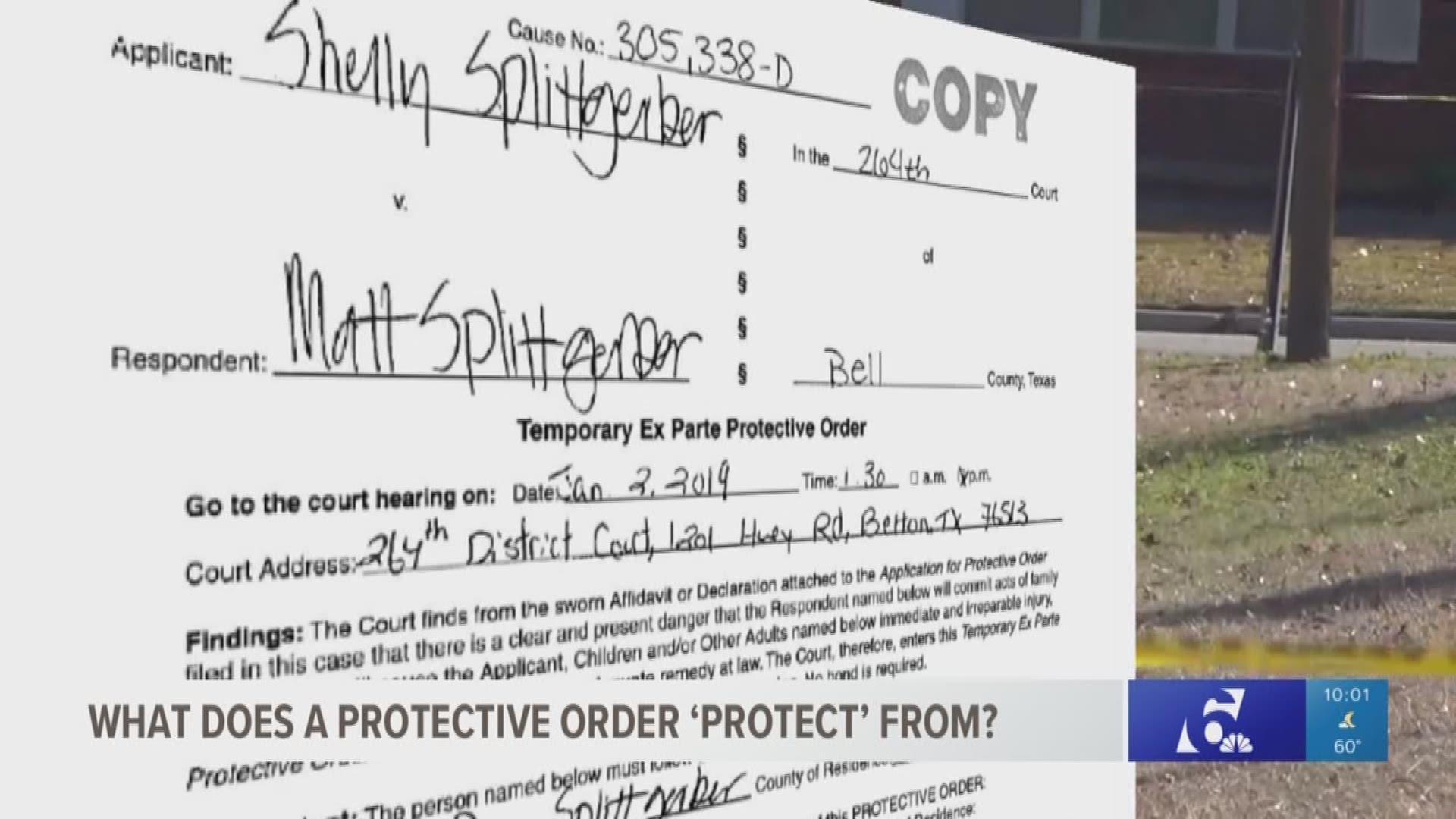Temple, TX — Thursday morning, around 6:00 a.m., officers found Shelly Splittgerber and her son lying on the lawn with gunshot wounds. She was pronounced dead at the scene and her son was taken to the hospital in critical condition. Shelly Splittgerber had been granted a protective order against her husband, Matt Splittgerber, just one day before.
So... Just how was that protective order supposed to protect Splittgerber? Did the system fail her? Channel 6's Andrew Moore spoke to legal expert Liz Mitchell to find out.
What is a protective order?
A protective order protects an individual from an abuser, or potential abuser, by requiring that individual to stay away from the applicant in addition to adding additional rules.
Matt Splittgerber was ordered to not communicate with his wife in any manner, not to go within 200 yards of her house, her son's school, or her workplace, and not to in any way harass his wife or son. The order forbade Matt Splittgerber to posses a firearm and said he could not damage any property they jointly owned.
If Splittgerber took any of those actions, he was in danger of paying a $4000 fine and could have gone to jail for a year. Of course, the order's protection was only effective to the degree that those consequences deterred Splittgerber from acting.
"No matter what protective order we are talking about, there is definitely a flaw in the system in that these protective orders are kind of set up to be retroactive," Mitchell said. "It takes someone violating the terms of the protective order for police to be triggered."
Unfortunately, the order did not deter Splittgerber, according to police, as he was willing to take his wife's life as well as his own.
Could the protective order have done anything else to protect the victim?
Mitchell told Channel 6 the judge could have added on a requirement that Matt Splittgerber wear a GPS monitor on his ankle.
"If a GPS is in play it will often alert the victim on the telephone," Mitchell said. "It's a case by case basis as to what conditions a judge would put on the domestic order."
It appears in this case, there was no ankle monitor. Channel 6 could not find a past criminal history on Matt Splittgerber and the order did not indicate Splittgerber had been convicted of past family violence. The protective order indicated Matt Splittgerber sent threatening texts, but nothing further. Those could have been factors in the decision.
Could the protective order have saved Shelly Splittgerbers life if the monitor, or anything else, been added?
"It really is a race to the victim. Who is going to get to her first?" Mitchell said. "The person who is being monitored or the police? There is really only so much that a court order could protect against."
Did the legal system fail Shelly Splittgerber?
"It's hard to say there isn't a flaw when someone ends up dead," Mitchell said. "Obviously there is a system broken when we have victims of violence that file for protective orders and still end up dead. There is definitely things that need to be done, but it is hard to find a solution."

